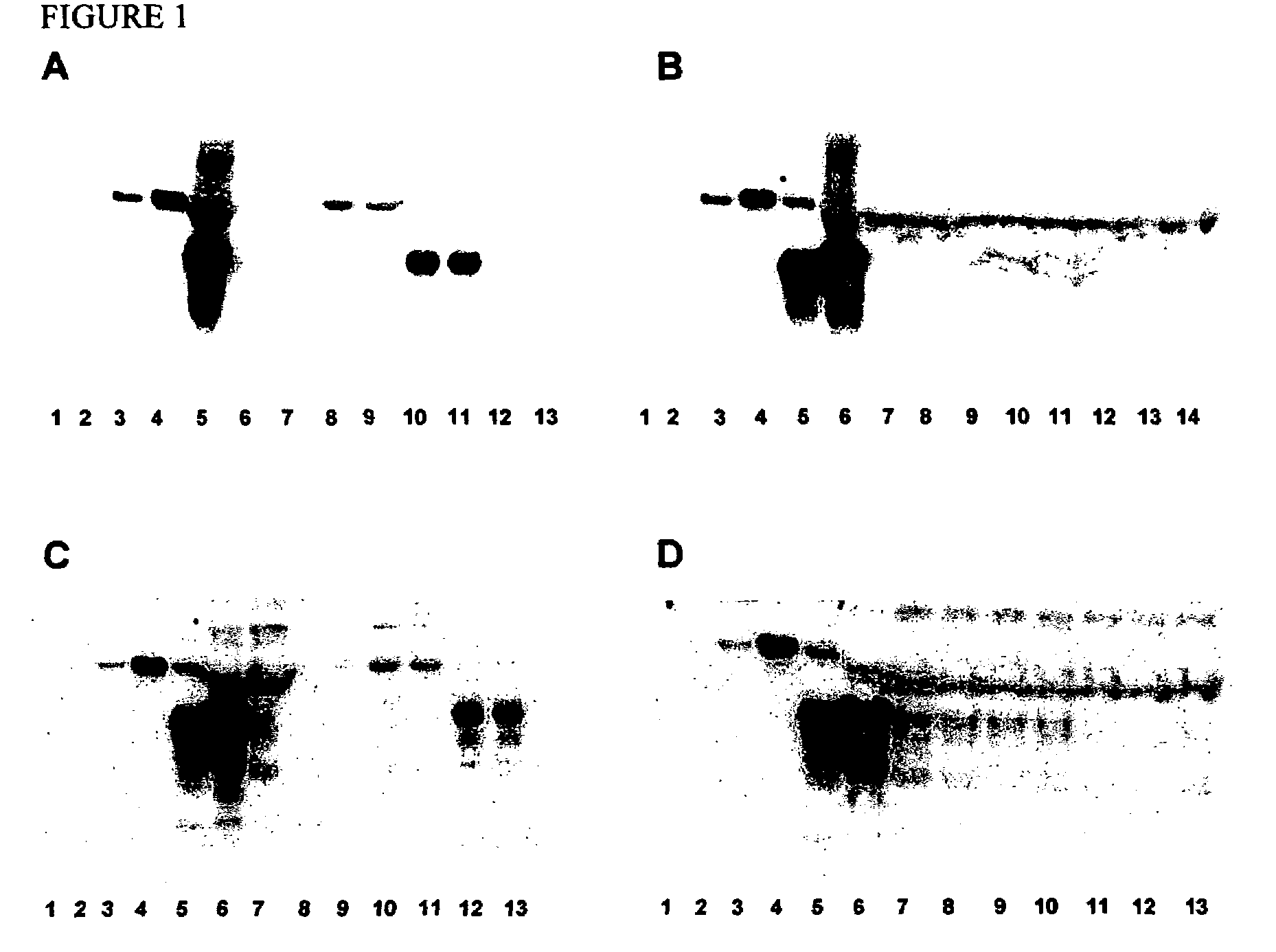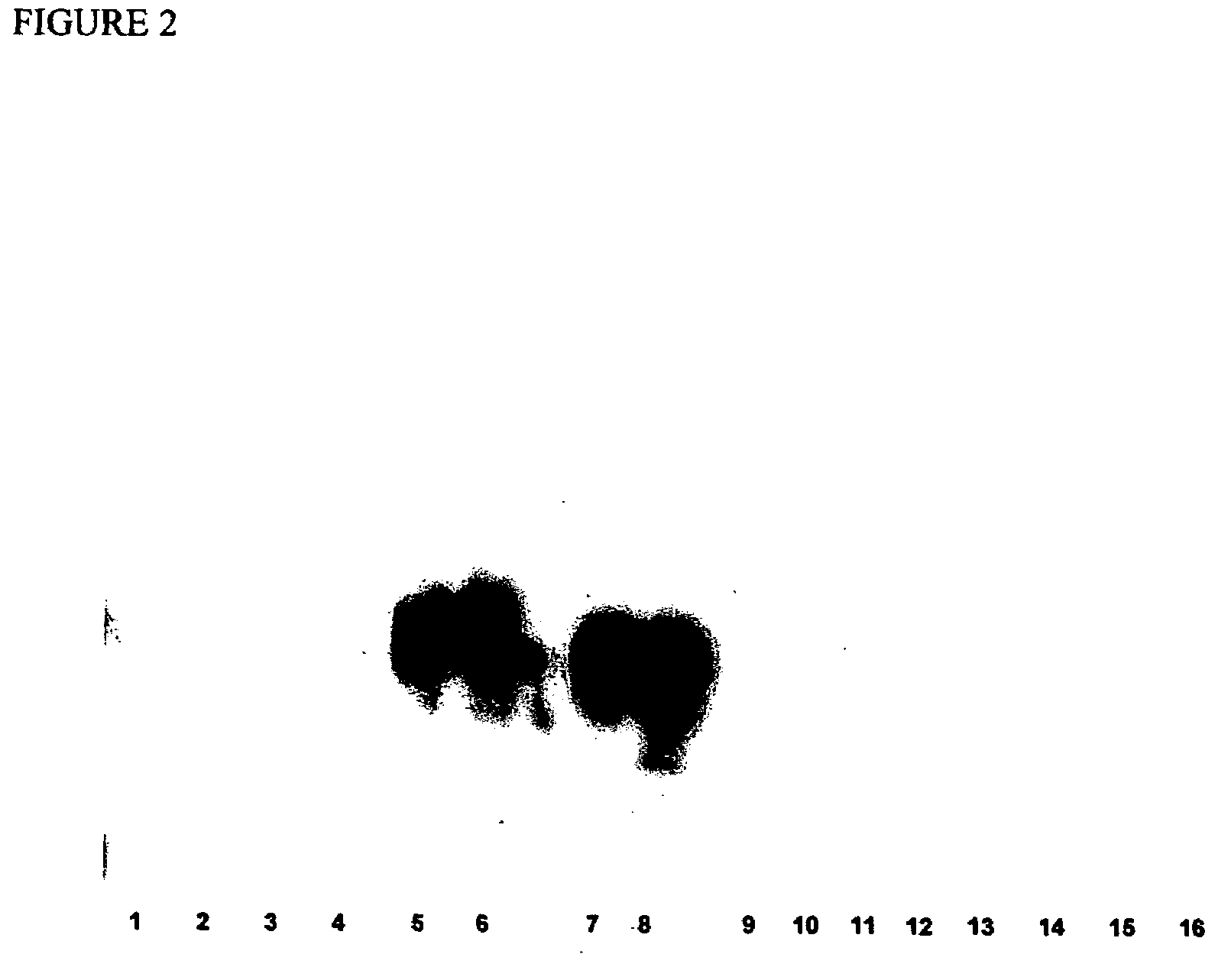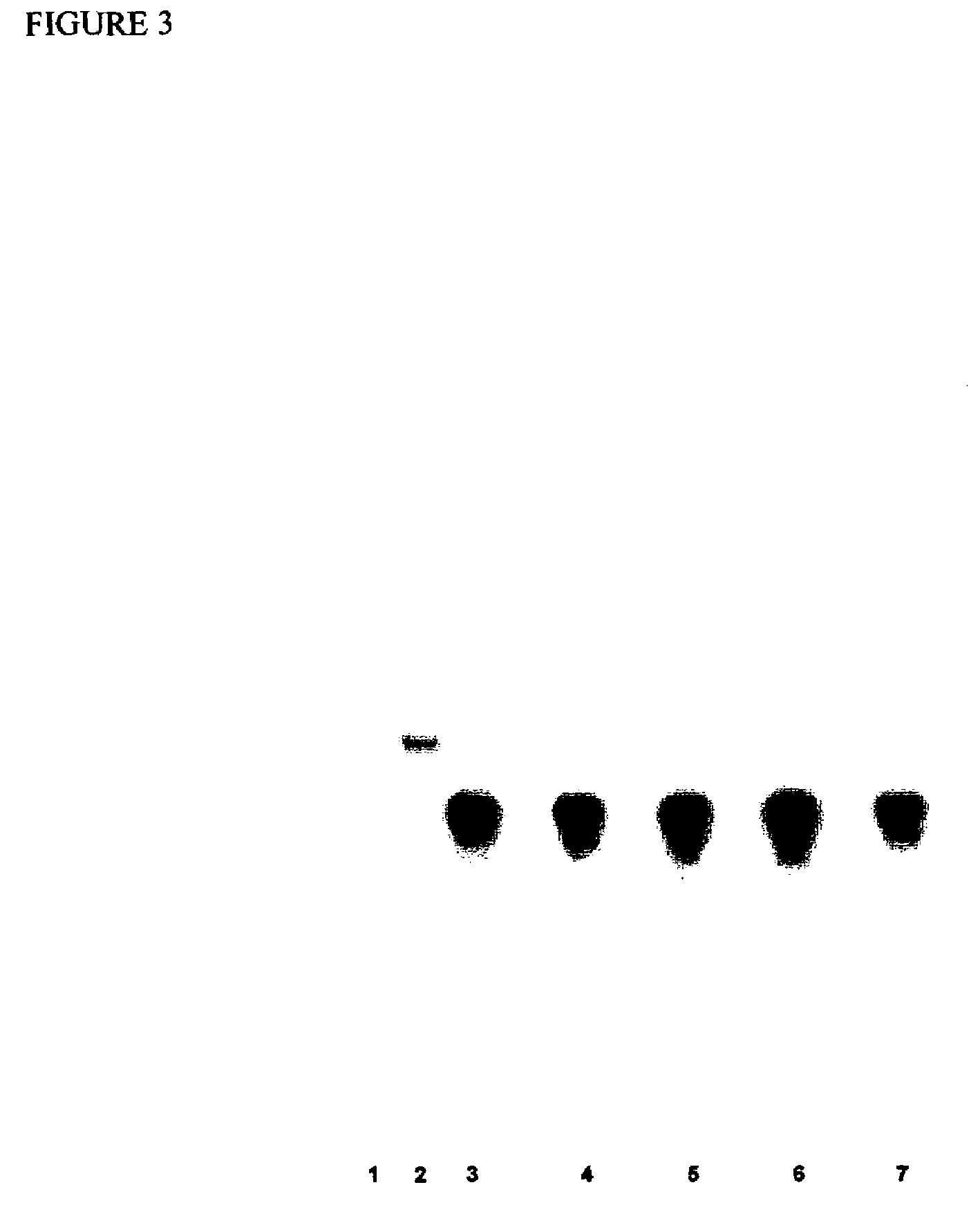Prion protein binding materials and methods of use
a technology of protein binding and materials, applied in the field of protein binding, can solve the problems of inability to identify infected animals using conventional serologic tests, no antibodies specific for tscs have been identified, and no known nucleic acid sequence can be used in polymerase chain reaction-based diagnostic methods
- Summary
- Abstract
- Description
- Claims
- Application Information
AI Technical Summary
Benefits of technology
Problems solved by technology
Method used
Image
Examples
example 1
Identification of Prion-binding Materials
[0090]Eighty polymer or inorganic particles were tested by using a prion binding on-beads test by a NBT / BCIP chromagen (nitroblue tetrazolium / 5-bromo-4-chloro-3-indolyl-phosphate-p-toluidine salt), as described below, using normal hamster brain homogenate. The binding results are provided in Table 1 wherein “−” means no binding and “+” means positive binding. The more “+” in a particle rating, the stronger the binding observed. Twelve particles that had at least “++” were evaluated further. Table 2 summarizes the twelve particles in their ability to bind to normal hamster prion. A higher score indicates an increased amount of prion binding.
[0091]
TABLE 1Screening Polymeric Material or Inorganic Particles for Prion Protein BindingReference No.NameManufacturerBinding Results 1TOYOPEARL ™ Amino-650MTosoh Bioscience+++(Montgomeryville, PA) 1′ Acetylated Amino-650MFull acetylated done by North−Carolina State University(NCSU) usingTOYOPEARL ™Amino ...
example 2
Identification of Prion-binding Materials
[0097]Identification of prion-binding materials was performed using hamster brain homogenate in batch format, using two different detection systems. In the first, the amount of prion bound to a material was detected by staining the beads after incubation with the target material. The second method detected the amount of prion present in the unbound fraction contained in flow-through and wash samples using SDS-PAGE and western blots. A detailed description of each methodology is described below.
[0098]As shown in Table 3 below, the TOYOPEARL™ Amino-65M, TSK-GEL™ Amino 750C. and TSK-GEL™ Phenyl-5PW provided the most specific binding of hamster brain PrPc.
[0099]
TABLE 3Results of Secondary ScreeningBindingBinding evaluatedevaluated byby on-bead testswestern blot withPolymer Particleswith NBT / BCIPECL-plusTOYOPEARL ™ Amino-650M++++++TSK-GEL ™ Amino 750C++++++TSK-GEL ™ Phenyl-5PW+++++++TOYOPEARL ™ Butyl-650C+++TOYOPEARL ™ Phenyl-650C+++TSK-GEL ™ DEAE...
example 3
Determination of Prion-binding Specificity
[0106]Generally, wetted beads composed of different binding materials were quantitatively placed into individual disposable columns. The columns contained frits small enough to retain the beads but large enough to permit flow-through of the challenge solutions. The challenge solutions were prion-containing brain homogenates in Sarkosyl (Sigma) spiked into red blood cell concentrate comixtures. More specifically, the challenge solutions contained TSE-infectious human brain homogenates, infectious hamster brain homogenates, noninfectious human brain homogenates, or noninfectious hamster brain homogenates. The challenge solutions were allowed to pass through the target binding material for a defined period of time, while the flow-through was being collected. Beads were then rinsed and quantitatively transferred from their columns into collection vials from which known quantities were removed for subsequent processing to determine specific prion...
PUM
 Login to View More
Login to View More Abstract
Description
Claims
Application Information
 Login to View More
Login to View More - R&D
- Intellectual Property
- Life Sciences
- Materials
- Tech Scout
- Unparalleled Data Quality
- Higher Quality Content
- 60% Fewer Hallucinations
Browse by: Latest US Patents, China's latest patents, Technical Efficacy Thesaurus, Application Domain, Technology Topic, Popular Technical Reports.
© 2025 PatSnap. All rights reserved.Legal|Privacy policy|Modern Slavery Act Transparency Statement|Sitemap|About US| Contact US: help@patsnap.com



